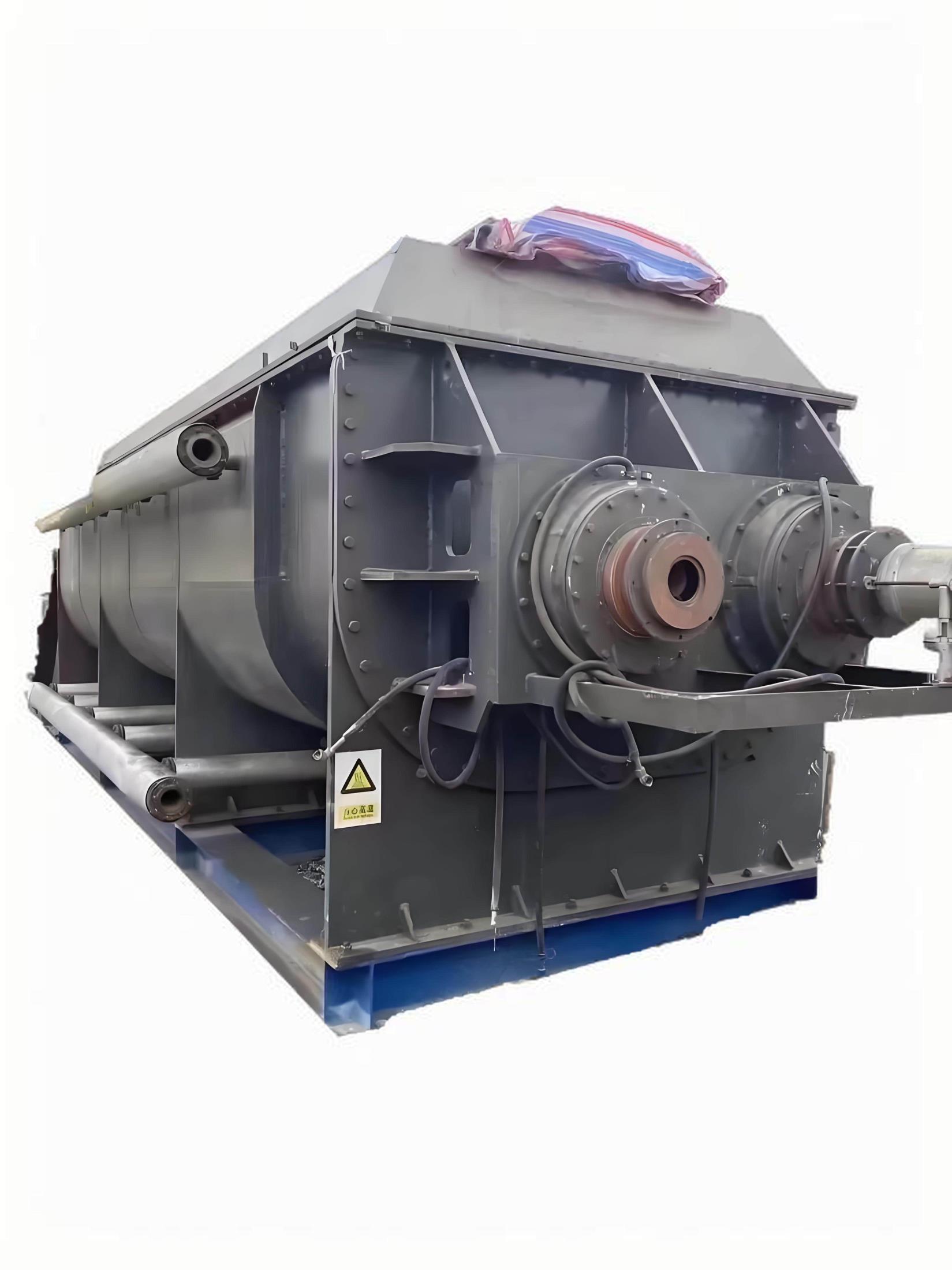The twin-paddle dryer is a drying equipment that directly contacts (organic or inorganic) paste-like or powdered materials with a rotating hollow shaft and wedge-shaped heating.
A paddle sludge dryer is a type of industrial thermal dryer. It uses rotating paddles within a horizontal container to mix and agitate the sludge, while simultaneously removing moisture from the sludge through indirect heating. Its main advantages are high thermal efficiency, uniform heat distribution, and excellent mixing, ultimately producing a dry, stable product that is easy to dispose of or reuse. This type of dryer is particularly suitable for materials with high moisture content, such as wastewater sludge, and can operate under both vacuum and atmospheric pressure.
Material Input: Wet sludge is conveyed into a horizontal trough.
Mixing and Agitation: Wedge-shaped paddles are attached to the central shaft. As the shaft rotates, the paddles thoroughly mix the sludge and propel it through the dryer.
Indirect Heating: The paddles and housing of the dryer are heated by a circulating medium, such as hot air or steam, which transfers heat to the sludge. 4. Water Evaporation: Heat causes water in the sludge to evaporate, carrying the evaporated water vapor away.
Discharge: Dry, stable sludge is discharged at the end of the dryer.
Indirect Heating: Minimizes heat loss and improves energy efficiency.
Effective Mixing: Ensures even heat distribution for consistent drying results.
High Thermal Efficiency: Optimizes energy use by reducing heat loss.
Durable Construction: Designed to withstand harsh industrial environments.
Versatility: Capable of processing various sludge types and meeting varying processing capacity requirements.
Self-Cleaning: The paddle design provides a self-cleaning effect.
Paddle sludge dryers play a key role in environmental engineering, particularly in wastewater treatment plants. They reduce sludge volume and produce a manageable product that can be used in a variety of applications:
Landfill Disposal: Reduces transportation costs.
Fertilizer or soil conditioner: Returns nutrients to the soil.
Biofuel: Used as an energy source.


Copyright 2025 All Right Reserved. Hebei Fupeng Environmental Protection Technology Group Co., LTD